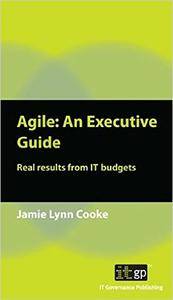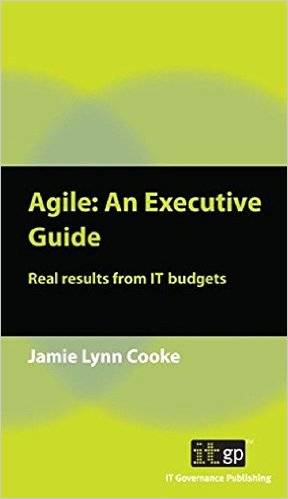Agile: An Executive Guide by Jamie Lynn Cooke (2011-05-19) by
English | 13 Jun. 2016 | ASIN: B01FIZQ53C | 60 Pages | AZW3/MOBI/EPUB/PDF (conv) | 1.36 MB
English | 13 Jun. 2016 | ASIN: B01FIZQ53C | 60 Pages | AZW3/MOBI/EPUB/PDF (conv) | 1.36 MB
The true power of Agile methods is not technology; it is business value generation.
Use Agile methods to turn your IT challenges into high-value returns
All too often, IT solutions are plagued by budget overruns, missed deadlines, low-quality outputs and dissatisfied users. Agile methods are proven, common-sense approaches for substantially increasing the relevance, quality, flexibility and bottom-line business value of your software solutions.
Quantify and measure the benefits that Agile methods can deliver to your organisation.
Agile methodologies such as Scrum, DSDM, FDD, Lean, XP and Kanban, are proven approaches for applying the finite resources of an organisation to deliver high business-value software solutions on time and within allocated budgets.
These methodologies protect organisations from wasting their IT budgets by replacing large upfront financial commitments with incremental investment based on the ongoing business value of the delivered software. They encourage ongoing collaboration with key stakeholders, empower staff to regularly deliver fully functional and fully tested capabilities, and ensure that the IT solutions delivered are responsive to ongoing organisational and market changes.
Product overview
Read this guide and:
•Understand the ten core business benefits of Agile and how they can significantly improve your organisation.
At the heart of Agile methods are ten core business benefits that enable organisations to maximise their IT investments, including better risk management, ongoing control of budget expenditure, better alignment with business requirements and substantially higher quality IT solutions. Agile: An Executive Guide details each of these benefits from a strategic senior management perspective and identifies which of the most popular Agile methods do (and do not) deliver these benefits.
•Identify which Agile methods align with the specific needs of your organisation and your projects.
Agile: An Executive Guide provides you with tools to assess your organisational culture, structure and dynamic in order to determine whether Agile methods are suitable to your specific needs, and to select those Agile methods that are the best fit for your organisation and your projects.
•Get the essential information you need to successfully implement Agile within your organisation.
Agile: An Executive Guide is full of practical advice, including detailed guidelines to help you choose the right kick-off point for Agile within your organisation, avoid common traps, monitor and measure your investment, and broaden the use of Agile methods into other areas of your organisation. It includes step-by-step guidelines, interactive tools and targeted questionnaires to help you and your staff successfully implement these methods.
Agile: An Executive Guide describes Agile methods in clear business language specifically written for professionals. It will help you make realistic business-driven decisions on whether Agile methods are appropriate for your organisation; whether you are looking to reduce your IT overheads, provide better software solutions to your clients, or have more control over your IT expenditures. This guide provides practical, proven ways to introduce, incorporate and leverage Agile methods to maximise your business returns.
Agile methods have been helping organisations turn their IT overheads into high-value returns for over 20 years. Buy this pocket guide today and turn your IT budgets into real, measurable, high-value results for your organisation.
About the author
Jamie Lynn Cooke has 25 years of experience as a senior business analyst, project manager and solutions consultant, working with over 130 public and private sector organisations throughout Australia, Canada and the United States.
Jamie has been working hands-on with Agile methods since 2003, and has researched hundreds of books and articles on Agile topics.



